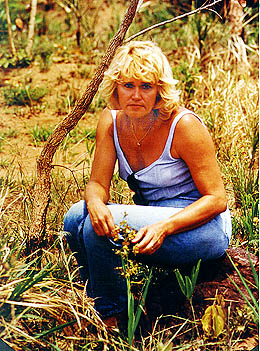
Lou, your expected CD "Cyrtopodium Genus, Brazilian Species" is now available, can you talk about the research you have done, the time you spent, the habitats visited, the new species you have found, to put it in other way, could you tell us a little about the way you carried out this research?
I suffered a lot developing this work. I can say that, until this moment, I spent 6 years and only succeeded because I live in Brasilia. If I lived at the coast, it would not be possible as the geographical center of the species irradiation is here, in the Brazilian Central Plateau. How could I do it if I lived at the sea side? First, the most part of Cyrtopodium species can not be cultivated there, I know about many frustrated attempts by growers who brought species from the Plateau Central to the seaside and the plants rot. Besides, there is a great number of species which just appear in the surface during the grow or blooming period. During the resting period, they are hidden, practically underground. As I was developing this work and at the same time I was doing the research of the orchids from the Central Plateau, every day I went to savanna and had the opportunity to follow all the vegetative cycle of those species. If it was a distant habitat, it would not be possible to do this.
Little by little, I was doing my work but, when I found a species, the correction identified was a doubt. Hoehne has a very interesting work and was, for me, the only true resource. For example, for all orchids lovers, every yellow Cyrtopodium is considered as andersonnii but I finally verified that it is not exactly. For example, this species is told as occurring in the State of Rio de Janeiro but it does not occur there, even for logical reason. How could a plant, found in the sand dune, in Central America, to be, suddenly, found in high elevation in Teresópolis, at Cristo Redentor hill and in other rock. It is a nonsense.

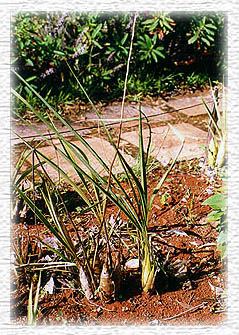
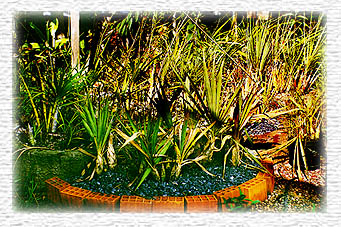
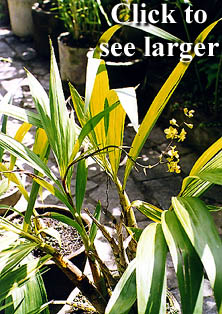 In one of those researched areas, I showed one photo to an humble man who had some orchids and was fond of them and, most interesting, he had sharp eyes. He immediately told me he though it was very interesting because there were many however the spike did not start from the pseudobulb base but at the apex. I answered that it could not be possible because one of the botanical characteristics of this genus is the basal inflorescence, the spike starts from the pseudobulb base and grows up. He insisted that it starts from the apex and I though he was mixed with another orchid genus. What a surprise when I saw next year, for twice, along Paraíba coast, exactly the same occurrence. Cyrtopodium paranaense blooming from the pseudobulb apex. This is very well photographed, very well registered. There will be a page of the book showing that. For sure, it is a problem of genetic instability because if the inflorescence is always basal and suddenly, it starts from the apex, it is, we can say, a genetic aberration. It is interesting have a whole page to show this fantastic occurrence because I've never seen anywhere, in my live, any reference to this.
In one of those researched areas, I showed one photo to an humble man who had some orchids and was fond of them and, most interesting, he had sharp eyes. He immediately told me he though it was very interesting because there were many however the spike did not start from the pseudobulb base but at the apex. I answered that it could not be possible because one of the botanical characteristics of this genus is the basal inflorescence, the spike starts from the pseudobulb base and grows up. He insisted that it starts from the apex and I though he was mixed with another orchid genus. What a surprise when I saw next year, for twice, along Paraíba coast, exactly the same occurrence. Cyrtopodium paranaense blooming from the pseudobulb apex. This is very well photographed, very well registered. There will be a page of the book showing that. For sure, it is a problem of genetic instability because if the inflorescence is always basal and suddenly, it starts from the apex, it is, we can say, a genetic aberration. It is interesting have a whole page to show this fantastic occurrence because I've never seen anywhere, in my live, any reference to this.
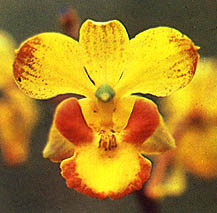 I should have do again some publication because there were mistakes in the identification of the variety. For example, I have wrongly described as a variety of Cyrtopodium vernum a variety from another species because the information available were inverted. Even people who knew a little more about Cyrtopodium confused, sometimes, two species. At the beginning, I followed indications from renowned orchids growers and it worked badly. Then I became extremely careful and I just believed on me and in bibliographic sources but even them were sometimes incorrect.
I should have do again some publication because there were mistakes in the identification of the variety. For example, I have wrongly described as a variety of Cyrtopodium vernum a variety from another species because the information available were inverted. Even people who knew a little more about Cyrtopodium confused, sometimes, two species. At the beginning, I followed indications from renowned orchids growers and it worked badly. Then I became extremely careful and I just believed on me and in bibliographic sources but even them were sometimes incorrect.
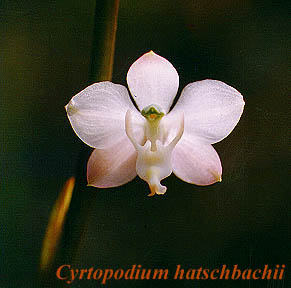 For example, Hoehne just mentions Cyrtopodium bradei without saying where it has been described nor where it has been deposited. I lose my head with this Cyrtopodium and asked myself where the original description could be. After a titanic fight, I solved the question. That name had been done but there was no register at all. Then Pabst described a species without knowing that it was Cyrtopodium bradei, as Cyrtopodium hatschabachii. I found this species, by chance, near Brasilia, in a swamp area. It was an enormous happiness but it has taken years to happen.
For example, Hoehne just mentions Cyrtopodium bradei without saying where it has been described nor where it has been deposited. I lose my head with this Cyrtopodium and asked myself where the original description could be. After a titanic fight, I solved the question. That name had been done but there was no register at all. Then Pabst described a species without knowing that it was Cyrtopodium bradei, as Cyrtopodium hatschabachii. I found this species, by chance, near Brasilia, in a swamp area. It was an enormous happiness but it has taken years to happen.
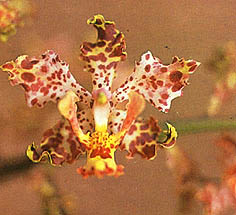 I had the luck to travel a lot and have, in each place, people attached to my work and I asked them to keep an eye on Cyrtopodium. Some day, a friend of mine from Vitória da Conquista, Bahia, called me telling she thought she had found Cyrtopodium blooming at Rio de Pontas, in Chapada de Diamantina and, according to this one on the photo, it seemed to be aliciae. The day after, I took a plane and went straight there and could confirm that it was really aliciae. It was an enormous happiness because I took years looking for and finally I have had found it. It was fantastic. There it was, in Bahia, gorgeous. Exactly, perfectly identical to Lindenia plates. How important are those plates.
I had the luck to travel a lot and have, in each place, people attached to my work and I asked them to keep an eye on Cyrtopodium. Some day, a friend of mine from Vitória da Conquista, Bahia, called me telling she thought she had found Cyrtopodium blooming at Rio de Pontas, in Chapada de Diamantina and, according to this one on the photo, it seemed to be aliciae. The day after, I took a plane and went straight there and could confirm that it was really aliciae. It was an enormous happiness because I took years looking for and finally I have had found it. It was fantastic. There it was, in Bahia, gorgeous. Exactly, perfectly identical to Lindenia plates. How important are those plates.
